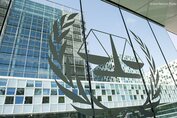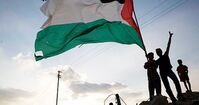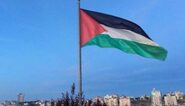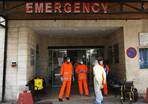4 may 2020

In reply to criminal complaints filed by the Palestinian Centre for Human Rights (PCHR), the Centre received, on 28 April 2020, 5 responses from the Military Prosecutor of Operational Affairs indicating that the Israeli Military Advocate General’s (MAG) decided to open an investigation into the killing of 5 Palestinians, including 3 children, at the Great March of Return (GMR) Protests.
PCHR, as the legal representative of the victims’ families, submitted criminal complaints to MAG, calling for a criminal investigation into the killing of: Wesal al-Shaiekh Khalil (15), Talal Matar (16), ‘Izz al-Deen al-Sammak (15),’Abed al-Rahman Abu Matar (18), and Mohanad Abu Tahoun (21), by Israeli occupation forces (IOF) during GMR protests in the Gaza Strip.
The mentioned criminal complaints were submitted with all evidences proving IOF’s grave violations of international law and using excessive and lethal force against peaceful demonstrators, which reflects an obvious disregard for the lives of civilians and the need to hold those involved in these crimes accountable.
PCHR had previously received 9 positive replies stating that the Israeli authorities decided to open an investigation into IOF crimes committed against Palestinian civilians at GMR protests.
The total number of crimes that Israeli authorities opened an investigation into upon complaints submitted by PCHR reach (14), while PCHR received 8 negative replies stating MAG’s decision to disregard the complaints without opening an investigation for absence of criminal intent. PCHR had contended MAG’s decisions with the Judicial Advisor of the Israeli government.
The five mentioned complaints are part of the (184) criminal complaints submitted by PCHR’s legal aid unit to the Israeli Military Advocate General regarding IOF’s violations committed in the GMR protests in the Gaza Strip.
These endeavors and efforts made by PCHR are part of its continuous work to promote legal protection for the victims of Israeli violations and defy the policy of impunity for Israeli officials and military leaders.
In light of the ongoing impunity of Israeli officials for violations committed against Palestinian victims, PCHR affirms that it will continue to hold Israeli officials and military leaders accountable at all levels, including before the International Criminal Court and national courts operating under the principle of universal jurisdiction.
PCHR, as the legal representative of the victims’ families, submitted criminal complaints to MAG, calling for a criminal investigation into the killing of: Wesal al-Shaiekh Khalil (15), Talal Matar (16), ‘Izz al-Deen al-Sammak (15),’Abed al-Rahman Abu Matar (18), and Mohanad Abu Tahoun (21), by Israeli occupation forces (IOF) during GMR protests in the Gaza Strip.
The mentioned criminal complaints were submitted with all evidences proving IOF’s grave violations of international law and using excessive and lethal force against peaceful demonstrators, which reflects an obvious disregard for the lives of civilians and the need to hold those involved in these crimes accountable.
PCHR had previously received 9 positive replies stating that the Israeli authorities decided to open an investigation into IOF crimes committed against Palestinian civilians at GMR protests.
The total number of crimes that Israeli authorities opened an investigation into upon complaints submitted by PCHR reach (14), while PCHR received 8 negative replies stating MAG’s decision to disregard the complaints without opening an investigation for absence of criminal intent. PCHR had contended MAG’s decisions with the Judicial Advisor of the Israeli government.
The five mentioned complaints are part of the (184) criminal complaints submitted by PCHR’s legal aid unit to the Israeli Military Advocate General regarding IOF’s violations committed in the GMR protests in the Gaza Strip.
These endeavors and efforts made by PCHR are part of its continuous work to promote legal protection for the victims of Israeli violations and defy the policy of impunity for Israeli officials and military leaders.
In light of the ongoing impunity of Israeli officials for violations committed against Palestinian victims, PCHR affirms that it will continue to hold Israeli officials and military leaders accountable at all levels, including before the International Criminal Court and national courts operating under the principle of universal jurisdiction.
1 apr 2020

The Palestinians in Occupied Palestine and the diaspora every year, on 30 March, commemorate the Land Day when Israeli forces in 1976 killed six Palestinians protesting against land confiscation in the Galilee.
Land Day has become an important event in the Palestinian collective narrative which emphasizes Palestinian resistance to Israeli colonization.
Land Day is usually marked with mass demonstrations and tree-planting campaigns in areas threatened with illegal confiscation in favor of Israeli settlement expansion.
In 2018, the Palestinians in the besieged Gaza Strip launched a major event to commemorate the Land Day called the Great March of Return (peaceful protests along the border between the Gaza Strip and the Palestinian territories occupied since 1948).
The spark
On 30 March 1976, massive protests broke out in the 1948 occupied Galilee over the Israeli government's decision to seize about 21,000 dunums of Palestinian land in Arraba and Sakhnin villages in the Galilee.
Although there were also protests in the Naqab and Wadi Ara, in southern Palestine, most of the action took place in six villages in the Galilee that had been placed under curfew: Sakhnin, Arraba, Deir Hanna, Tur'an, Tamra and Kabul. The demonstrations were met with serious aggression and violence. Six Palestinians were killed and hundreds injured and arrested.
The Palestinian protests forced the Israeli government, which was led by Yitzhak Rabin then, to backtrack on the confiscation plan.
The first Land Day's martyrs were Khair Yasin, 23, Khadija Shawahneh, 23, Raja Abu Rayya, 23, Khader Khalayla, 30, Mohsen Taha, 15, and Rafat Zuhdi, 21.
Develop the Galilee
In March 1976, the Israeli government unveiled a program to "develop the Galilee" by confiscating 21,000 dunums of Palestinian-owned land in favor of Jewish-only settlements. The program was seen by the Palestinians as a thinly-veiled attempt to Judaize the region.
The National Committee for the Defense of Arab Lands, which was formed a few years earlier, had been urging the government to stop its land expropriation plans since 1974. In response to the new declaration, they changed their tactics and called for a general strike to be held on 30 March.
Based on official statistics, the Israeli authorities between 1948 and 1972 confiscated over two million dunums of land in the Galilee and Triangle, a concentration of Arab towns and villages adjacent to the Green Line, added to millions of dunums of land seized during the 1948 Nakba.
Palestinians of 1948 territories
Land is at the heart of the conflict between the Israeli authorities and the Palestinians living in the territories occupied since 1948.
30 March 1976 was the first time that the Palestinians in the 1948 occupied territories had organized mass protests against Israeli policies.
About 1,700,000 Palestinians live in the Palestinian territories occupied since 1948 and they constitute 20% of the total population of Israel.
Historic Palestine
The total area of historic Palestine is about 27,700 square kilometers, Israeli Jews utilize more than 85% of it whilst Palestinians (the native inhabitants of the land) utilize less than 15% of the land, according to the Palestinian Central Bureau of Statistics.
44th Land Day
Because of the lockdown due to the coronavirus outbreak this year, the Palestinians, instead of organizing mass demonstrations to mark the 44th anniversary of the Land Day, decided to change the way they commemorate this special day.
Only a few number of Palestinians placed flowers at the graves of the Land Day martyrs in Sakhnin, Arraba, Tiba and Kafr Kanna after obtaining permits from the authorities. The rest of Palestinians took part by lighting candles, playing national songs and raising Palestine flags on their rooftops and balconies.
Settlement Expansion
The Palestinian Central Bureau of Statistics said in a recent report that by the end of 2018, the number of Israeli settlement outposts and military bases in the Occupied West Bank had reached 448.
The report noted that the number includes 150 settlements, 26 neighborhoods added to existing settlements, and 128 random settler outposts.
At the end of 2018, the number of Israeli settlers in the Occupied West Bank reached 671,007 with a population growth rate of about 2.7%.
This means that about 47% of the settlers live in Occupied Jerusalem. Their number is estimated at 311,462, including 228,614 living in the part that Israel annexed forcefully after its occupation of the West Bank in 1967.
The settler population in the Occupied West Bank is about 23 for every 100 Palestinians, while in Jerusalem it is 70 settlers for every 100 Palestinians.
Last year witnessed a concerning increase in the settlement expansion activity in the Occupied West Bank where the Israeli government approved the construction of 8,457 settlement units as well as 13 new settler outposts.
Based on official statistics, the Israeli occupation in 2019 demolished 678 Palestinian buildings, 40% of whom were in Jerusalem. In the same year, the Palestinians received stop-construction orders for 556 new buildings in the West Bank.
Land Day has become an important event in the Palestinian collective narrative which emphasizes Palestinian resistance to Israeli colonization.
Land Day is usually marked with mass demonstrations and tree-planting campaigns in areas threatened with illegal confiscation in favor of Israeli settlement expansion.
In 2018, the Palestinians in the besieged Gaza Strip launched a major event to commemorate the Land Day called the Great March of Return (peaceful protests along the border between the Gaza Strip and the Palestinian territories occupied since 1948).
The spark
On 30 March 1976, massive protests broke out in the 1948 occupied Galilee over the Israeli government's decision to seize about 21,000 dunums of Palestinian land in Arraba and Sakhnin villages in the Galilee.
Although there were also protests in the Naqab and Wadi Ara, in southern Palestine, most of the action took place in six villages in the Galilee that had been placed under curfew: Sakhnin, Arraba, Deir Hanna, Tur'an, Tamra and Kabul. The demonstrations were met with serious aggression and violence. Six Palestinians were killed and hundreds injured and arrested.
The Palestinian protests forced the Israeli government, which was led by Yitzhak Rabin then, to backtrack on the confiscation plan.
The first Land Day's martyrs were Khair Yasin, 23, Khadija Shawahneh, 23, Raja Abu Rayya, 23, Khader Khalayla, 30, Mohsen Taha, 15, and Rafat Zuhdi, 21.
Develop the Galilee
In March 1976, the Israeli government unveiled a program to "develop the Galilee" by confiscating 21,000 dunums of Palestinian-owned land in favor of Jewish-only settlements. The program was seen by the Palestinians as a thinly-veiled attempt to Judaize the region.
The National Committee for the Defense of Arab Lands, which was formed a few years earlier, had been urging the government to stop its land expropriation plans since 1974. In response to the new declaration, they changed their tactics and called for a general strike to be held on 30 March.
Based on official statistics, the Israeli authorities between 1948 and 1972 confiscated over two million dunums of land in the Galilee and Triangle, a concentration of Arab towns and villages adjacent to the Green Line, added to millions of dunums of land seized during the 1948 Nakba.
Palestinians of 1948 territories
Land is at the heart of the conflict between the Israeli authorities and the Palestinians living in the territories occupied since 1948.
30 March 1976 was the first time that the Palestinians in the 1948 occupied territories had organized mass protests against Israeli policies.
About 1,700,000 Palestinians live in the Palestinian territories occupied since 1948 and they constitute 20% of the total population of Israel.
Historic Palestine
The total area of historic Palestine is about 27,700 square kilometers, Israeli Jews utilize more than 85% of it whilst Palestinians (the native inhabitants of the land) utilize less than 15% of the land, according to the Palestinian Central Bureau of Statistics.
44th Land Day
Because of the lockdown due to the coronavirus outbreak this year, the Palestinians, instead of organizing mass demonstrations to mark the 44th anniversary of the Land Day, decided to change the way they commemorate this special day.
Only a few number of Palestinians placed flowers at the graves of the Land Day martyrs in Sakhnin, Arraba, Tiba and Kafr Kanna after obtaining permits from the authorities. The rest of Palestinians took part by lighting candles, playing national songs and raising Palestine flags on their rooftops and balconies.
Settlement Expansion
The Palestinian Central Bureau of Statistics said in a recent report that by the end of 2018, the number of Israeli settlement outposts and military bases in the Occupied West Bank had reached 448.
The report noted that the number includes 150 settlements, 26 neighborhoods added to existing settlements, and 128 random settler outposts.
At the end of 2018, the number of Israeli settlers in the Occupied West Bank reached 671,007 with a population growth rate of about 2.7%.
This means that about 47% of the settlers live in Occupied Jerusalem. Their number is estimated at 311,462, including 228,614 living in the part that Israel annexed forcefully after its occupation of the West Bank in 1967.
The settler population in the Occupied West Bank is about 23 for every 100 Palestinians, while in Jerusalem it is 70 settlers for every 100 Palestinians.
Last year witnessed a concerning increase in the settlement expansion activity in the Occupied West Bank where the Israeli government approved the construction of 8,457 settlement units as well as 13 new settler outposts.
Based on official statistics, the Israeli occupation in 2019 demolished 678 Palestinian buildings, 40% of whom were in Jerusalem. In the same year, the Palestinians received stop-construction orders for 556 new buildings in the West Bank.
30 mar 2020

March 30th marks Palestinian Land Day, commemorating the day on March 30, 1976, when Palestinians inside Israel protested against the Israeli government announcement of the seizure of 21,000 dunams (5,189 acres) of Palestinian land.
The Israeli police violently suppressed the demonstrations, killing 6 young Palestinians, and injuring and arresting many others.
But 2020, for the first year since 1976, Palestinians will not be holding a Land Day commemorative march, due to the fear of further spreading the coronavirus COVID-19 in the crowded Palestinian Occupied Territories.
Every year, Palestinian citizens of Israel, and Palestinians in the West Bank, Gaza and abroad, commemorate Land Day with marches and remembrance. Land Day 2020 coincides with the two year anniversary of the launch of the weekly Great March of Return demonstrations in Gaza.
Through these demonstrations, Palestinians have been demanding their right to return to the land that is now known as Israel, as well as an end to the 13 year blockade imposed on Gaza by Israel and Egypt.
The Palestinian refugees in Gaza hoped through the weekly non-violent protests to regain access to land, now in Israel, from which their ancestors were forced to flee during the country’s creation in 1948.
Instead, the protesters were shot with live ammunition, killing hundreds and maiming tens of thousands. This went on weekly for nearly two years, with no repercussions for the Israeli soldiers who repeatedly shot non-violent Palestinian demonstrators.
According to Gaza medical officials, 215 Palestinians have been killed by Israeli soldiers firing from the other side of the border during the protests, with another 8,000 suffering gunshot wounds. In the past few months, the weekly protests have been smaller.
In 2019 U.N. Human Rights Council investigators said Israeli forces may have committed war crimes and crimes against humanity, with children and paramedics among the fatalities.
The total area of historical Palestine is 27, 000 square kilometres, 85% of which is under Israeli military control. Therefore only 15% of the ancestral land is available for indigenous Palestinians to cultivate their land.
“We call upon our people not to go to the Return encampments on March 30 and to stay home in order to maintain the safety of our people in the face of this lethal pandemic,” said Khaled al-Batsh, a senior member of the Islamic Jihad militant group.
Instead, Batsh called upon Gazans to mark the day by raising Palestinian flags on their rooftops and burning Israeli ones.
So far, nine out of the 97 coronavirus cases confirmed in the Palestinian territories have been confirmed in the Gaza Strip.
Gaza’s hospitals, which were overwhelmed during the protests by gunshot wounds and amputations, are now gearing up for the challenge of containing the coronavirus in the coastal enclave of two million Palestinians, many living in refugee camps.
The Israeli police violently suppressed the demonstrations, killing 6 young Palestinians, and injuring and arresting many others.
But 2020, for the first year since 1976, Palestinians will not be holding a Land Day commemorative march, due to the fear of further spreading the coronavirus COVID-19 in the crowded Palestinian Occupied Territories.
Every year, Palestinian citizens of Israel, and Palestinians in the West Bank, Gaza and abroad, commemorate Land Day with marches and remembrance. Land Day 2020 coincides with the two year anniversary of the launch of the weekly Great March of Return demonstrations in Gaza.
Through these demonstrations, Palestinians have been demanding their right to return to the land that is now known as Israel, as well as an end to the 13 year blockade imposed on Gaza by Israel and Egypt.
The Palestinian refugees in Gaza hoped through the weekly non-violent protests to regain access to land, now in Israel, from which their ancestors were forced to flee during the country’s creation in 1948.
Instead, the protesters were shot with live ammunition, killing hundreds and maiming tens of thousands. This went on weekly for nearly two years, with no repercussions for the Israeli soldiers who repeatedly shot non-violent Palestinian demonstrators.
According to Gaza medical officials, 215 Palestinians have been killed by Israeli soldiers firing from the other side of the border during the protests, with another 8,000 suffering gunshot wounds. In the past few months, the weekly protests have been smaller.
In 2019 U.N. Human Rights Council investigators said Israeli forces may have committed war crimes and crimes against humanity, with children and paramedics among the fatalities.
The total area of historical Palestine is 27, 000 square kilometres, 85% of which is under Israeli military control. Therefore only 15% of the ancestral land is available for indigenous Palestinians to cultivate their land.
“We call upon our people not to go to the Return encampments on March 30 and to stay home in order to maintain the safety of our people in the face of this lethal pandemic,” said Khaled al-Batsh, a senior member of the Islamic Jihad militant group.
Instead, Batsh called upon Gazans to mark the day by raising Palestinian flags on their rooftops and burning Israeli ones.
So far, nine out of the 97 coronavirus cases confirmed in the Palestinian territories have been confirmed in the Gaza Strip.
Gaza’s hospitals, which were overwhelmed during the protests by gunshot wounds and amputations, are now gearing up for the challenge of containing the coronavirus in the coastal enclave of two million Palestinians, many living in refugee camps.
29 mar 2020

The Arab League called today on the relevant international bodies and organizations to expose Israel's racist policies, condemning the Israeli practices and violations against the basic Palestinian rights and addressing these Israeli practices, in accordance with the rules of international law and what international conventions and laws established.
On the occasion of the 44th anniversary of Land Day in Palestine, the Arab League hailed the steadfastness and struggle of the Palestinian people, reiterating its absolute support for the brave Palestinian struggle to restore their national rights and establish an independent Palestinian state with East Jerusalem as its capital.
The Arab League stressed support to the Palestinian people in the occupied Palestinian territories, including the people in the lands occupied in 1948, expressing appreciation for their struggles in defense of their existence, their rights, their lands and their identity.
The Israeli occupation authorities are exploiting the concern and focus of the world to combat the coronavirus outbreak to implement their plans to seize and Judaize the Palestinian lands, said the Arab League.
On the occasion of the 44th anniversary of Land Day in Palestine, the Arab League hailed the steadfastness and struggle of the Palestinian people, reiterating its absolute support for the brave Palestinian struggle to restore their national rights and establish an independent Palestinian state with East Jerusalem as its capital.
The Arab League stressed support to the Palestinian people in the occupied Palestinian territories, including the people in the lands occupied in 1948, expressing appreciation for their struggles in defense of their existence, their rights, their lands and their identity.
The Israeli occupation authorities are exploiting the concern and focus of the world to combat the coronavirus outbreak to implement their plans to seize and Judaize the Palestinian lands, said the Arab League.
